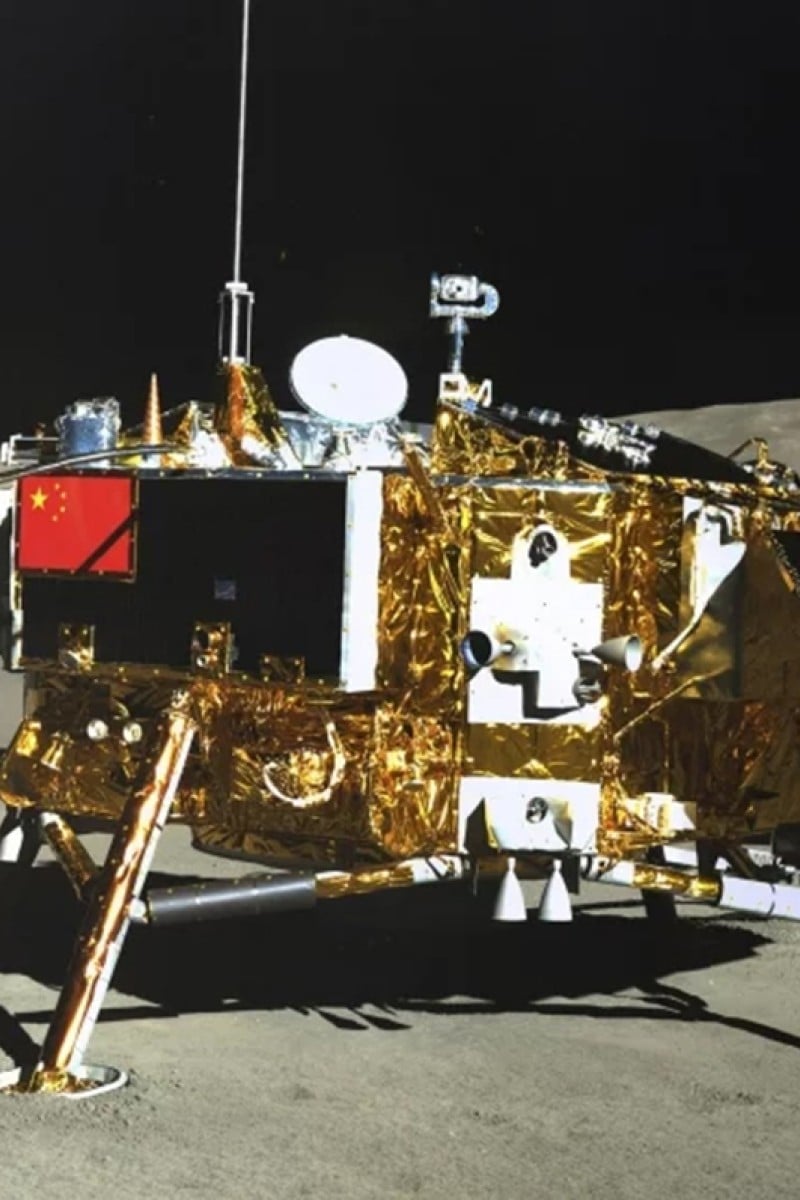
Chang'e 4 landing on dark side of the moon made possible thanks to tech and decisions made by HK PolyU researchers; professor involved tells students to ‘dare to explore’
Researchers from the university also helped to plan and select a suitable landing site on the far side of the moon
 The lunar lander of the Chang'e 4 mission houses a camera mount that HK PolyU engineers helped to build.
The lunar lander of the Chang'e 4 mission houses a camera mount that HK PolyU engineers helped to build.A Hong Kong professor who helped with a major space exploration mission has said that he wants more students to “dare to explore, [and] dare to embrace new challenges”.
“I hope [that] more students in Hong Kong will dedicate themselves to science and technology, as this will be a core force to drive Hong Kong’s development in future decades. Everything is possible,” said Dr Wu Bo.
Wu and his team from Polytechnic University’s (PolyU) land surveying and geo-informatics department contributed to Chang’e 4 landing and operation on the far side of the moon on January 3. The local researchers, together with their mainland counterparts, analysed the moon’s terrain and light conditions, helped select a safe landing site for the lunar lander, and created the camera mount that is critical for the mission.
China’s Chang’e 4 lunar spacecraft touches down on the dark side of the moon
Wu explained to Young Post that they needed to find an area that had small slopes, fewer rocks, and enough light. They also needed to find a place where the lander-rover could transmit signals back to Earth. The team had gathered and assessed information on more than 400,000 craters, 20,000 boulders, terrain surface, and rock abundance, before eventually narrowing down the potential landing regions to two.
On the day of the landing, Wu’s team had only three hours to decide which one to pick. In the end, they went with the 190km-wide, 5km-deep Von Karman crater in the moon’s South Pole-Aitken basin.
Also making their contributions were Professor Yung Kai-leung and his team at PolyU’s industrial and systems engineering department. The researchers had helped design and make a rotating mount for the lander’s camera. Last Thursday, the first ever panorama was taken of the moon’s far side, followed by a cosmic 360-degree “selfie”.
PolyU was the only university from Hong Kong that was involved in this mission.
